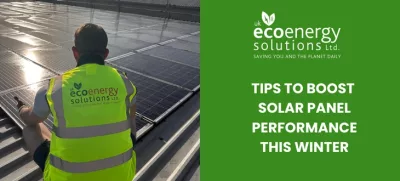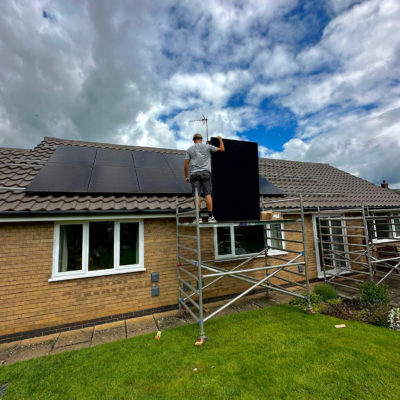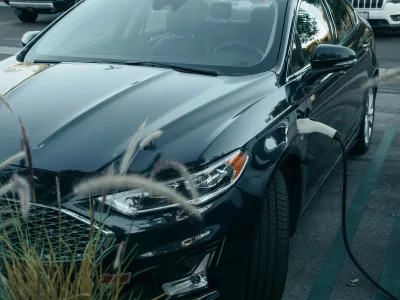
An increasing number of households are turning to solar panels to generate their own electricity. By early 2025, over 1.5 million homes in the UK had solar systems installed, marking a 5.9% increase from the previous year. While domestic installations had already seen strong growth in 2022 due to surging wholesale energy prices, the trend has continued steadily, with nearly 190,000 new installations recorded in 2024 alone. This blog explores how effective solar panels are during the winter months, whether now is a smart time to invest in them, and how to get the most out of your system during the colder, darker season.
How effective are solar panels in winter?
Solar panels generate electricity by capturing energy from visible light. So as long as there’s enough daylight to see, your panels can still produce power, even on cloudy days.
During late spring and summer in the UK, we enjoy around 14 hours of daylight, with stronger sunlight and fewer cloudy skies. This is when solar panel systems are at their most productive, helping households make the biggest savings on energy bills and often generating surplus electricity to export back to the grid.
In contrast, winter brings shorter days, lower sun angles, and more frequent overcast weather, and occasionally snow. As a result, solar generation can drop significantly during this time, often producing only 10–25% of what would typically be generated in the summer months.

How can I get the most from my solar panels in winter?
Winter brings shorter days and lower light levels, which means your solar panels have less time to generate electricity. To make the most of the energy they do produce, it’s important to adjust how and when you use your appliances.
Time Your Energy Use
Since solar energy must be used as it’s generated (or else it’s sent back to the grid), try to run your high-energy appliances during the brightest part of the day, typically around midday.
- Schedule appliances like your washing machine and dishwasher to run while you’re out.
- If you’re home, consider batch cooking in your electric oven during daylight hours or use a slow cooker to prepare dinner while the sun is up.
By shifting your energy use to match when your panels are producing the most, you’ll maximize your solar investment, even in the winter months.

Keep Your Solar Panels Clean
To ensure your solar panels perform at their best, it’s important to keep them free from dust, dirt, and debris, which can reduce the amount of sunlight they absorb.
If your panels are safely accessible, such as at ground level, you can clean them yourself following the manufacturer’s guidelines. Use low-pressure water, a soft brush, and a squeegee for gentle cleaning.
For hard-to-reach systems or a more thorough clean, consider hiring a professional. Start by asking your installer for recommendations. A professional clean typically costs around £250.
Reduce Shade on Your Solar Panels
Shade from trees or a build-up of fallen leaves can significantly reduce the efficiency of your solar panels. To keep them performing well, it’s important to reduce any obstructions. Late winter is an ideal time to prune back overgrown vegetation in your garden.
Always make sure you have the proper permission before carrying out any pruning, and if the job is beyond your reach or ability, it’s best to hire a professional to do it safely.
Pair Solar Panels with Other Green Technologies

Maximise the benefits of your solar panels by combining them with other eco-friendly technologies. This helps you make the most of the energy you generate at home.
For example, you can charge your electric vehicle (EV) during the day when the sun is shining, or use solar power to support your heat pump heating system. To take things a step further, consider investing in a home battery, which allows you to store excess energy for use in the evenings or during cloudy days.
By integrating these systems, you can reduce reliance on the grid and move closer to energy independence.
Is Winter a Good Time to Install Solar Panels?
Yes, solar panels can be installed at any time of year, and you’ll start seeing savings on your energy bills from the very first month.
By getting quotes and choosing an installer during the winter, you’ll be ready to take full advantage of the peak solar generation months, which typically run from April to September. It’s a smart way to get ahead and maximize your return throughout the year.


